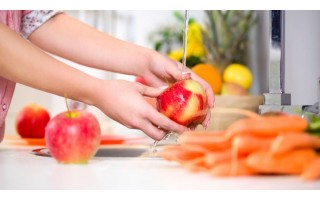“Genes load the gun, the environment pulls the trigger.” Experts use this line to reference our current obesogenic world and the genetic predisposition that most of us have to both crave and store excess energy from highly caloric foods.
Since the world is hard to change, and our genes are hard to change, the general advice is usually “change your lifestyle.”
Seems easy enough, but how do we do that?
Here is how:
Eating less and moving more is correct - everyone already knows this. The most important factor for weight loss is adherence to a calorie-restricted diet. Adherence is easiest when ingrained unhealthy habits change. If it seems nearly impossible to follow this advice, research states that it is not.
Identify food associations
Food cravings are easily learned. Constant exposure to tasty food allows endless opportunities to associate eating within a context or following a cue. For example, eating cake as an after-dinner dessert. Once a cue is psychologically linked to food intake, all you need is a clean dinner plate before you reach for that dessert. Actual hunger is irrelevant. Emotional ties make this association even stronger.
Exposure therapy
Intentionally confront cues that signal unhealthy eating, such as the sight, smell or taste of a favorite food. Pair exposure to these cues with related contexts, like a specific place, emotion or thought that is usually associated with the food. For example, place a piece of cake on the dinner table once your plate is empty or once you have retired to the couch and are mulling over the day’s events.
Reduce the power of these associations
Once the food is in plain sight, touch it. Grab it and hold it up to your nose. Breathe in its essence for an extended period. Then, take (only) a small bite of it and leave it alone. This practice forces you to re-learn that certain cues do not always signal unhealthy or uncontrollable eating. After a few rounds of exposure therapy, with each session lasting about an hour, the stimulus will naturally predict a controlled or no-eating cue for you.
Gain strength for future battles
Through successful and long term exposure therapy, you’ll be armed with the ability to
1) stop a behavior at the appropriate time and resist impulse
2) think with flexibility to shift your response to circumstances
3) Remember information to complete future tasks
Re-wire your eating behaviors and enter the New Year with renewed appreciation for controlling your eating behavior. For further help and accountability changing your dietary habits, contact a Registered Dietitian at F-Factor.






